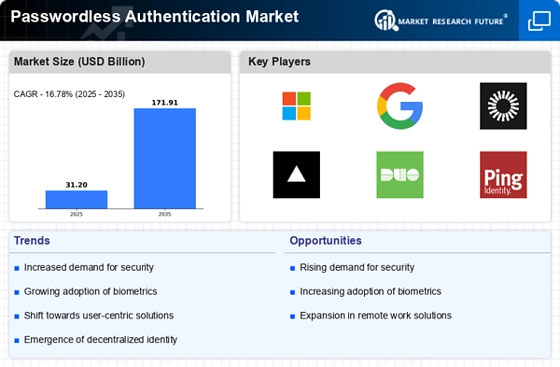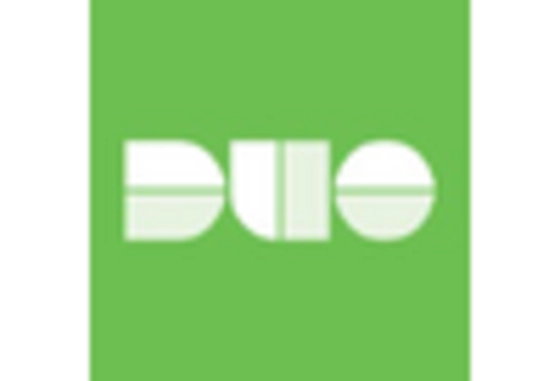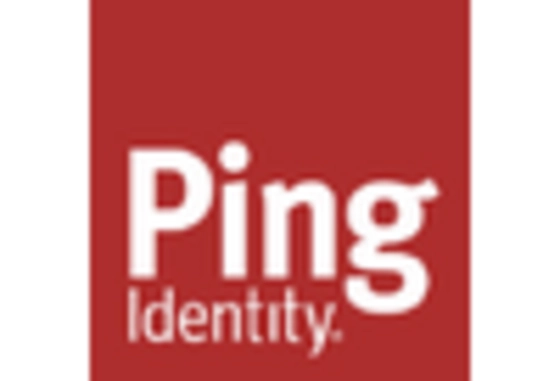Rising Cybersecurity Threats
The Passwordless Authentication Market is experiencing a surge in demand due to the increasing frequency and sophistication of cyber threats. Organizations are recognizing that traditional password-based systems are vulnerable to breaches, leading to a shift towards more secure authentication methods. In 2025, it is estimated that cybercrime will cost businesses over 10 trillion dollars annually, prompting a reevaluation of security strategies. Passwordless solutions, which utilize biometrics and cryptographic keys, offer enhanced protection against unauthorized access. This trend indicates a growing awareness among enterprises about the necessity of robust security measures, thereby driving the adoption of passwordless technologies.
Regulatory Compliance and Standards
The Passwordless Authentication Market is significantly influenced by the evolving landscape of regulatory compliance. Governments and regulatory bodies are increasingly mandating stricter security measures to protect sensitive data. For instance, regulations such as the General Data Protection Regulation (GDPR) and the California Consumer Privacy Act (CCPA) emphasize the need for secure authentication methods. Organizations are compelled to adopt passwordless solutions to meet these compliance requirements, which not only enhance security but also mitigate the risk of hefty fines. As compliance becomes a critical factor in business operations, the demand for passwordless authentication is likely to grow, reflecting a proactive approach to data protection.
Consumer Demand for Enhanced User Experience
The Passwordless Authentication Market is significantly shaped by consumer demand for enhanced user experience. Users increasingly prefer authentication methods that are not only secure but also convenient and quick. Passwordless solutions, which eliminate the need for remembering complex passwords, align with this consumer preference. Research indicates that 80 percent of users express frustration with traditional password systems, leading to a growing acceptance of passwordless technologies. As businesses strive to improve customer satisfaction and retention, the adoption of passwordless authentication is likely to rise. This trend highlights the importance of balancing security with user convenience in the evolving landscape of digital interactions.
Technological Advancements in Authentication
The Passwordless Authentication Market is propelled by rapid technological advancements in authentication methods. Innovations in biometrics, such as facial recognition and fingerprint scanning, are becoming more sophisticated and accessible. According to recent data, the biometric authentication market is projected to reach 50 billion dollars by 2026, indicating a robust growth trajectory. These advancements not only improve security but also enhance user convenience, making passwordless solutions more appealing to consumers and businesses alike. As technology continues to evolve, the integration of artificial intelligence and machine learning into authentication processes is expected to further drive the adoption of passwordless systems.
Shift Towards Remote Work and Digital Transformation
The Passwordless Authentication Market is witnessing a notable shift driven by the increasing prevalence of remote work and digital transformation initiatives. As organizations adapt to flexible work environments, the need for secure and efficient authentication methods has become paramount. Passwordless solutions facilitate seamless access to corporate resources without the need for traditional passwords, which can be cumbersome and insecure. In 2025, it is projected that over 70 percent of the workforce will engage in remote work, underscoring the necessity for robust authentication mechanisms. This trend suggests that businesses are prioritizing user experience while maintaining security, thereby fueling the growth of passwordless authentication.

















Leave a Comment